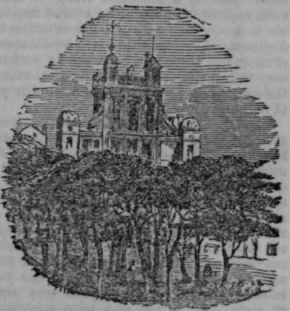Greenwich Observatory
Description
This section is from the book "The Corner Cupboard; Or, Facts For Everybody", by Robert Kemp Philp. Also available from Amazon: The Corner Cupboard; or Facts for Everybody.
Greenwich Observatory
Greenwich Observatory. The Royal Observatory at Greenwich was built in 1675. It may be seen by obtaining leave from the Lords of the Admiralty; but it must be obvious to any person that it is absolutely necessary to prohibit idlers lounging about this establishment at all times. The instruments are first-rate ; but the building is badly contrived for the purposes to which it is applied. The salaries of the various officers at Greenwich Observatory are as follow : - the Astronomer Royal, £800 per annum ; the first Assistant to ditto, £400 ; the second Assistant, £250; the third Assistant, £200; fourth, sixth, and seventh Assistants, each £100; and the fifth Assistant £120. The apparatus in use for denoting the exact time at which a heavenly body crosses the wire of the telescope consists of a cylinder, in circumference about three feet, and over which a covering of paper is to be placed. This cylinder will be made to revolve uniformly by means of a clock movement, governed by a centrifugal pendulum. The paper will travel a distance of about one-third of an inch in a second of time, but of course it can be made to travel a greater or less distance if desired. A pricker or marker, to be actuated by means of electricity, will be placed immediately over this paper. Wire will extend from this marker, and terminate in a key by the side of the observer at the telescope. On pressing down this key a mark will be made on the paper on the revolving cylinder, in the same way as marks are made by Morse's telegraph. At the instant that the observer notices that a heavenly body is crossing one of the wires in his telescope, he will touch the key, and thus cause a mark to be made on the moving paper. Each second of time will, by clock-work mechanism, be also marked by dots upon the same piece of paper, so that, by measuring the distance of the dot made by the observer from the nearest second dot made by the clock-work, the exact instant of time at which the observer's mark was made will be ascertained. By this means the observer will be enabled to record the exact period at which such heavenly body crosses the respective wires of his telescope, and that with a degree of nicety which can be measured to the fractional part of a second of time. Without such apparatus it would be almost impossible to denote the time of an observation to a degree much less than that of a whole second of time, but by its means it will be perfectly easy to ascertain the exact instant, even to the one-hundredth or one-thousandth part of a second.

Continue to:


